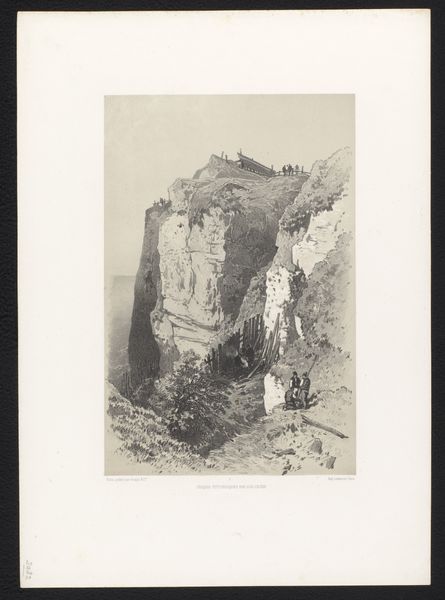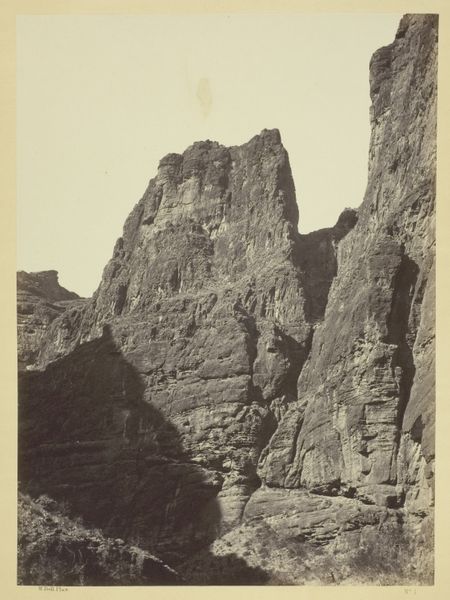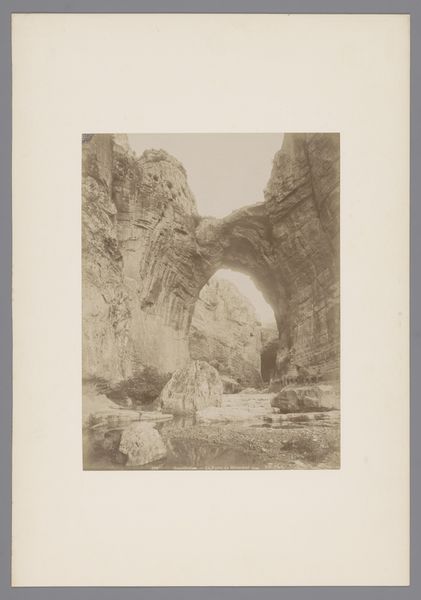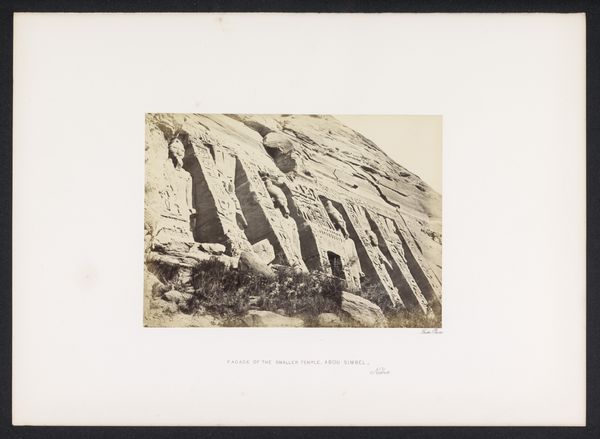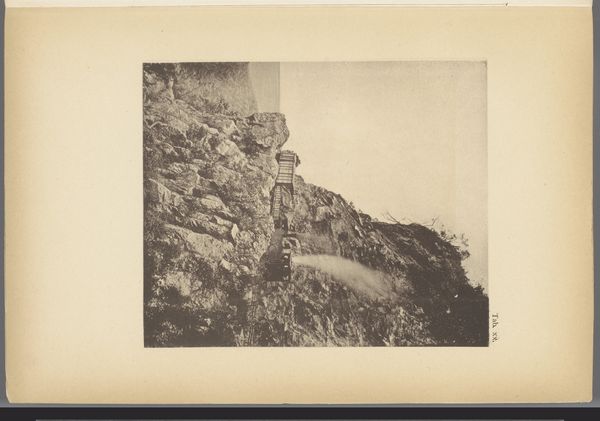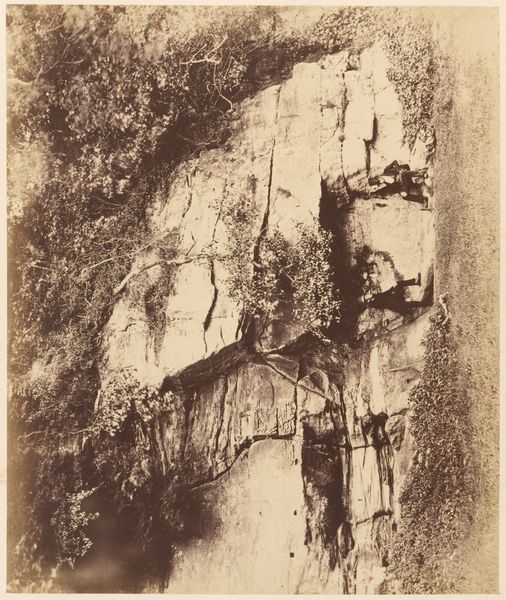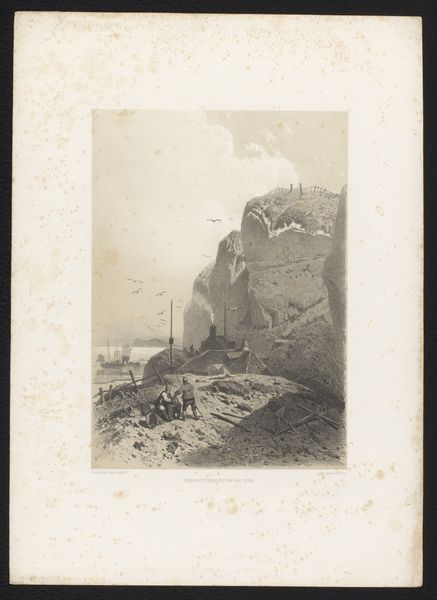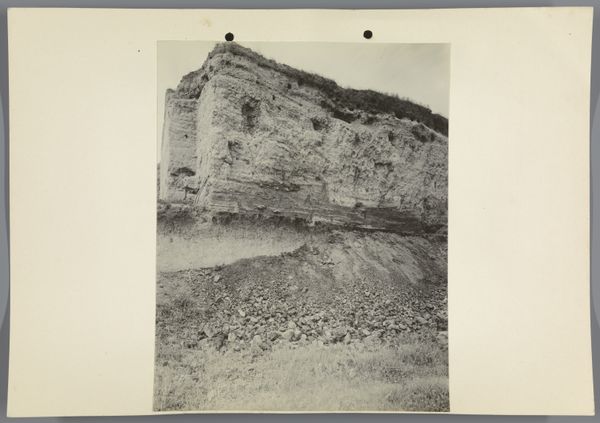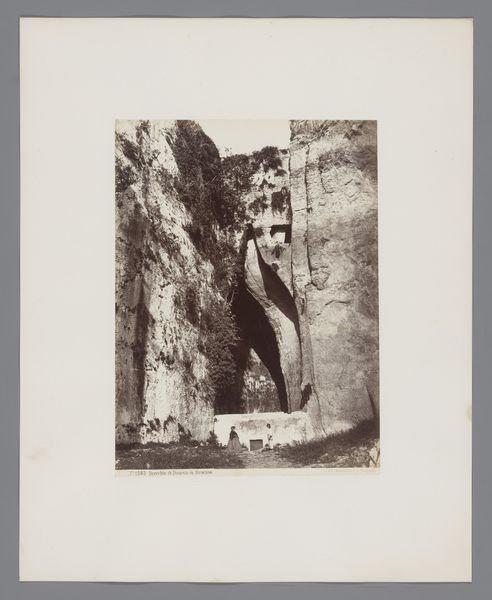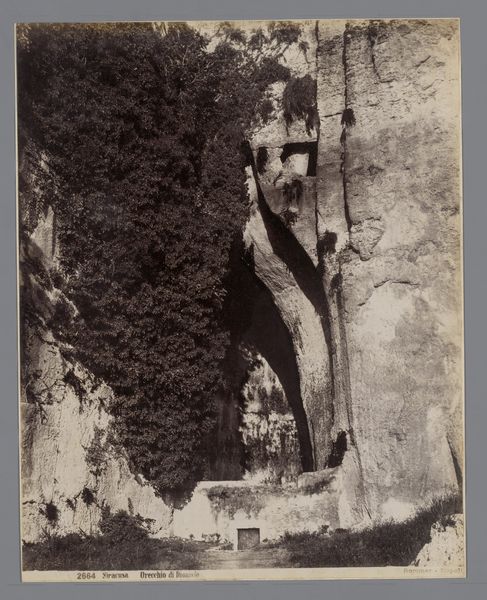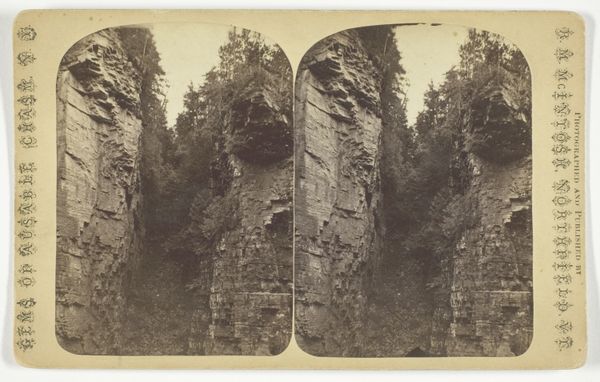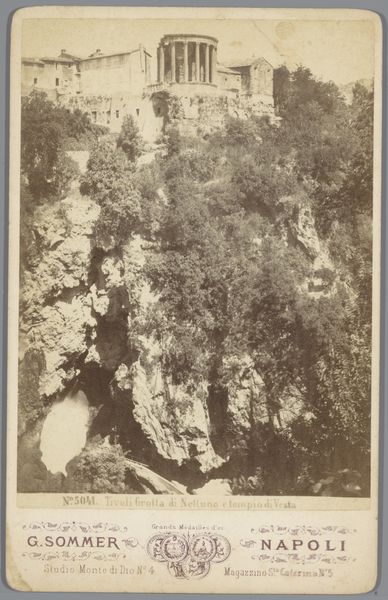
Dimensions: height 236 mm, width 183 mm
Copyright: Rijks Museum: Open Domain
Curator: What strikes you about this image of the Ruïne van Kasteel de Haar te Haarzuilens, dating from before 1892? There's no name on the photograph itself. Editor: The first thing that jumps out is the texture – look at how the crumbling brickwork contrasts with the softness of the surrounding landscape. It's almost aggressively tactile. I can practically feel the decay. Curator: It is suggestive. Ruins often act as symbols of impermanence, of time's relentless march. Here, these remnants can evoke themes of vanished power and perhaps a subtle warning about worldly ambition. Editor: That’s interesting, I was also considering the labour and resources that initially built this castle. Think of the materials—bricks, mortar, maybe some limestone or sandstone accents depending on what was available locally. It all speaks to a massive undertaking and investment. Now look what time has done. Curator: The skeletal remains imply something profound. Castles, traditionally, were not merely structures but emblems of stability, offering protection. But this ruin? It mirrors the fallibility of human endeavor and prompts contemplation on historical forces beyond individual control. Editor: True. It makes you question the lifespan of objects and structures, from the raw materials extracted from the earth to the skilled hands of the workers. Where did the brick makers source the clay? Who were they? How were the stones raised? Curator: A fitting point. Considering the castle as a vessel also – emptied by history – we’re forced to think about loss. These hollowed walls act almost as mirrors, reflecting not only external decay but internal vulnerabilities. Editor: Looking closer, the vegetation reclaiming the stone…that really underscores the cycle of construction, collapse, and return. Materials eroding and merging again. Curator: So in a sense, we begin seeing that the symbolism inherent within decay highlights broader life-cycle principles: things aren’t really ending but always changing into a newer formation. Editor: It's fascinating to consider this photograph then, as a material document of not just decay, but continuous transformation and an endless life cycle. Curator: A poignant perspective.
Comments
No comments
Be the first to comment and join the conversation on the ultimate creative platform.
